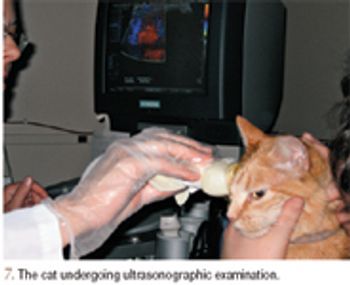
A 10-year-old 12-lb (5.5-kg) female spayed domestic shorthaired cat was presented to Colorado State University's Veterinary Medical Center for evaluation of a protruding nictitating membrane of the right eye.

A 10-year-old 12-lb (5.5-kg) female spayed domestic shorthaired cat was presented to Colorado State University's Veterinary Medical Center for evaluation of a protruding nictitating membrane of the right eye.
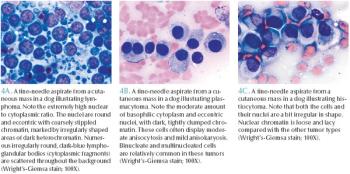
A 3-year-old castrated male Labrador retriever with a history of blood dripping from its penis was referred to the Foster Hospital for Small Animals at the Cummings School of Veterinary Medicine at Tufts University.

College Station, Texas - 5/2/2008 - Texas A&M University's veterinary college received approval to build a veterinary imaging and cancer research center. Plans for the $4.5-million project include an 8,000-square-foot building for small-animal and equine patients.

College Station, Texas - Texas A&M University's veterinary college received approval last month to build a veterinary imaging and cancer research center.

Clinicians in Liverpool studied owners' perceptions of their cats' quality of life during chemotherapy for lymphoma.
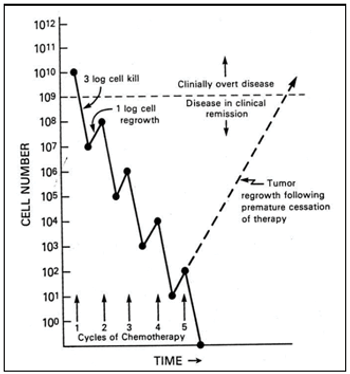
Goals of chemotherapy: tumor control, prolonged survival, maintain quality of life.
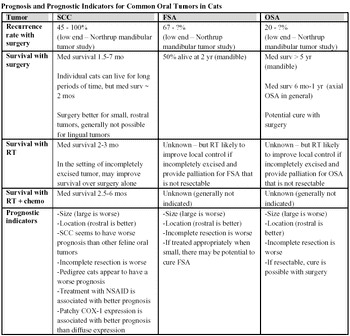
Oral tumors in cats present a challenge. These tumors are usually noticed only at very advanced stages.

Chemotherapy can cause adverse effects in veterinary cancer patients.

Malignant melanoma is the most common oral tumor in the dog.
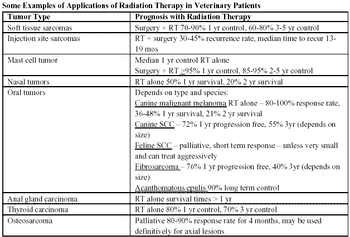
Use of energy (photons) or energized particles (electrons, protons, neutrons) to kill cancer cells.

Mast cells are normal inflammatory cells that are produced in the bone marrow and mature in connective or mucosal tissues.

It is not often that one is able to bear witness to a sea change. The veterinary community has, in my opinion, seen one with the development of the melanoma vaccine. This unique form of therapy, a DNA-based vaccine, would justify my opinion, but the successful collaboration between veterinary oncologists, human oncologists and the pharmaceutical industry also serve to mark this event as extraordinary.

Whether I'm helping pets heal or helping their owners say goodbye, my job in veterinary oncology brings special patients and their families into my life who remind me why I love pets-and my work.
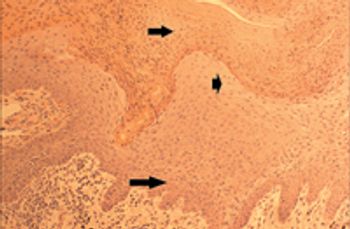
An 8-year-old 46.3-lb (21-kg) female spayed mixed-breed dog was referred to the Purdue University Veterinary Teaching Hospital for evaluation of lethargy, inappetence, weight loss, and alopecia of several months' duration.

The goal of this article is to describe the common histologic variants, clinical signs, biologic behavior, and newest options for early diagnosis and effective treatment of primary lung tumors in dogs and cats.

Dr. Christine Olver discusses how iron deficiency is identified and treated in dogs as well as when practitioners should perform cytologic exams.
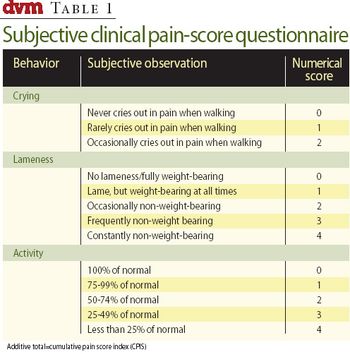
Osteosarcoma is a common cancer to see in larger, middle-aged to older dogs. One of the challenges in treating these patients is pain management. Amputation effectively relieves bone pain and is the standard of care for patients, but may not be an option for all dogs.

Baton Rouge, La. - Herpes virus is the next recruit in the war on cancer.

Although anal-sac tumors make up only 2 percent of all cutaneous neoplasms in dogs, they comprise a significant portion of the referrals to veterinary surgeons and oncologists.

While this was a relatively small study (nine dogs were treated with LDC), this paper suggests that LDC may be an effective alternative to MTD chemotherapy in dogs with hemangiosarcoma.

Los Angeles - 10/22/07 - Literally 'racing' for the cure, a $30-million canine cancer campaign logo adorned the hood of a vehicle participating in the biggest race of the year for NASCAR.

Fort Collins, Colo. - Colorado State University (CSU) announced it will build its second supercluster, this one for cancer research and treatment, along with NeoTREX, an embedded business enterprise dedicated to speeding the transition of cancer research from the academic world to the global marketplace.
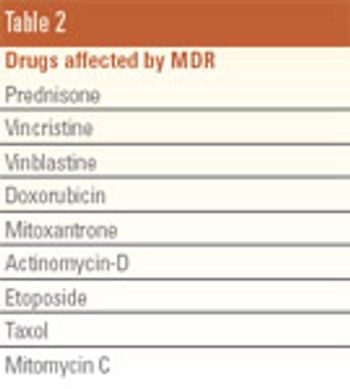
Employing different alkylating agents is seen in the design of rescue protocols for lymphoma dogs. oneeded
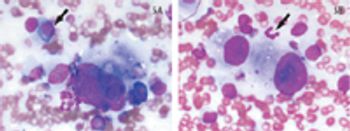
Canine histiocytic proliferative diseases represent a range of disorders with different pathologic features as well as clinical behavior.

Denver, Colo. - 6/12/07 - The Morris Animal Foundation (MAF) released a Canine Cancer Campaign (CCC) poster to help veterinarians educate their clients about cancer risks in dogs.